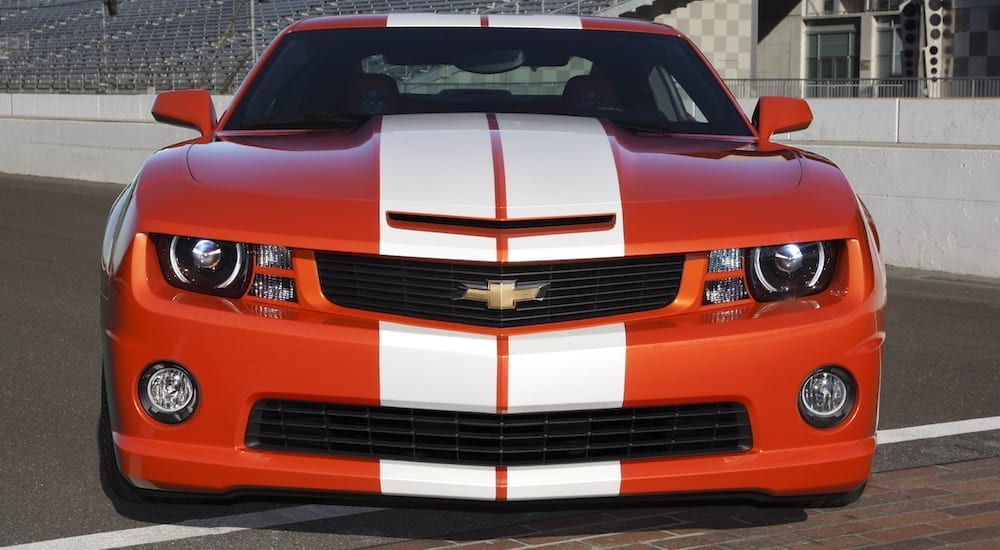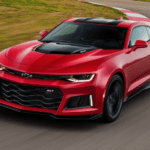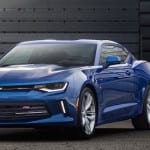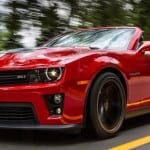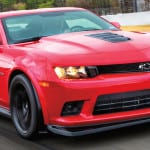The Corvette has seemingly been around forever, as the vehicle was first introduced back in 1966 (in time for the 1967 model year). However, even die-hard fans remember that the vehicle took a brief break during the early 2000s, as the model wasn’t produced for nearly a decade. After having last produced a new model in 2002, the brand decided to restart production on the historic model several years later.
In 2006, the brand unveiled their new Camaro Concept at the North American International Auto Show, and they subsequently showed off several variations of this mock model (including a stylish convertible version). Finally, in mid-2009, the vehicle finally made its way back to the market, with the brand noting that the new fifth-generation model was going to appeal to any type of car buyer. The brand was clearly on to something. After selling just over 60,000 models during their “first” year on the market, Chevy hasn’t sold less than 77,000 models annually since that time.
Why has the revamped Corvette proven to be so popular? Well, that’s probably because there are few vehicles on the market that contain all of the features and capabilities of this beloved model. The vehicle is known for its sportiness, but engineers have done an admirable job of including amenities that influence luxury, technology, and convenience. By the time the fifth generation wrapped up by the end of 2015, the model had quickly reestablished itself as one of the most popular offerings on the market.
We’ve explored each of the model years for these fifth-generation Chevy Camaros. That way, when you’re ready to start shopping for cars for sale in Cincinnati, you’ll understand that a used Chevy Camaro is the perfect target…
2010
Considering the model hasn’t been produced for nearly a decade, the new iteration of the Camaro didn’t resemble its predecessor. For starters, the vehicle could be equipped with a whole new slate of available engine offerings. The 3.6-liter V6 engine was one of the smaller options, but the system still managed to pump out a hulking 312 horsepower and 273 pounds-feet of torque. The next offering was the incredible 6.2-liter V8 engine, which was accompanied by a manual transmission. Drivers could ultimately anticipate a practically unmatched 426 horsepower and 420 pounds-feet of torque. Finally, the innovative L99 V8 engine was for those seeking a bit more efficiency. Despite the impressive 400 horsepower and 410 pounds-feet of torque, fuel-saving technologies like Active Fuel Management contributed to the impressive 30-miles-per-gallon highway fuel efficiency.
Of course, engineers revamped other areas of the vehicle’s mechanics. The brand now included an independent four-wheel suspension system, as well as their renowned StabiliTrak stability/traction control unit. Safety offerings included an extensive airbag system, while the main exterior offerings included available racing stripes (thus emphasizing the model’s athleticism).
2011
The next model year saw engineers slightly revise the performance specs of their applicable engines. For instance, the V6 engine was boosted to 312 horsepower and 178 pounds-feet of torque. On the inside, the brand included an innovative head-up display, a clever feature that displays an array of useful information (like vehicle diagnostics and fuel efficiency) right in front of the driver.
Another notable inclusion was the Synergy Green exterior color, which was previously only available in the 2010 Special Edition of the model.
2012
Once again, the fifth-generation Camaro saw some major changes to the vehicle’s engines. The vehicle could now be equipped with a 3.6-liter V6 LFX engine, which managed to deliver a respectable 323 horsepower. Engineers also provided drivers with another suspension offering, as well as an optional Rear Vision Package (which allowed owners to monitor everything that was happening behind their ride).
Some of the major changes came to the vehicle’s interior, as the instrumental panel was completely revamped to make way for more innovative technology. The brand also redesigned their steering wheel while adding a number of notable convenience amenities (including the power lift feature for the front passenger).
2013
The majority of the changes to the 2013 Chevy Camaro either involved cosmetics or technology. For instance, the brand included their Chevrolet MyLink system, which provided drivers an opportunity to access a number of applications via the accompanying touchscreen. Engineers also included inside rearview mirrors, and customers now had the opportunity to opt for the Blue Ray Metallic paint color and/or the various wheel designs (including 18- and 20-inch configurations). To top it off, the interior was adorned in an opulent Mojave leather trim.
The vehicle also saw several upgrades that influence performance and handling. If customers opted for the manual transmission offering, they’d have the opportunity to choose from a variety of mechanical inclusions. The 2013 Camaro included the Hill Start Assist mode (which provides an extra boost on the inclines), as well as the sporty Zl1 shift knob. To improve convenience, engineers also added remote start technology.
2014-2015
For the first time during the model’s fifth generation, Chevy revamped the design of their Camaro. The front and rear of the vehicle were revised, leading to a lower stance and a more athletic design. Engineers were clearly focused on highlighting the model’s traditional, older design, leading to the inclusion of the beloved “halo ring” headlamps.
Meanwhile, the 2015 model only saw one major change: the addition of the Blue Velvet Metallic exterior color. Otherwise, all of the model’s features and capabilities carried over from the previous year’s model.
Next Generation
The model saw another revamp in 2016 as the brand ushered in the sixth generation of the model. The shape of the vehicle was molded into a rounder shape, eliminating some of the jagged curves and lines from previous-year models. Engineers also included brand new wheels and revised headlamps/taillights. The interior also saw several changes, like the inclusion of a new steering wheel and seats.
The brand now had a number of engine offerings that could be opted for, including the standard V6 (335 horsepower) and the impressive the 6.2-liter V8 (455 horsepower). For those seeking something a bit smaller, that the 2.0-liter turbocharged four-cylinder engine could be a perfect choice. Despite its smaller stature, this specific unit still manages to deliver 275 horsepower.
Otherwise, the brand slightly changed some of the interior amenities. For example, the size of the accompanying touchscreen was increased, while engineers also included a new LED interior lighting display. The brand also included a number of new safety amenities, like the useful Magnetic Ride Control suspension.
